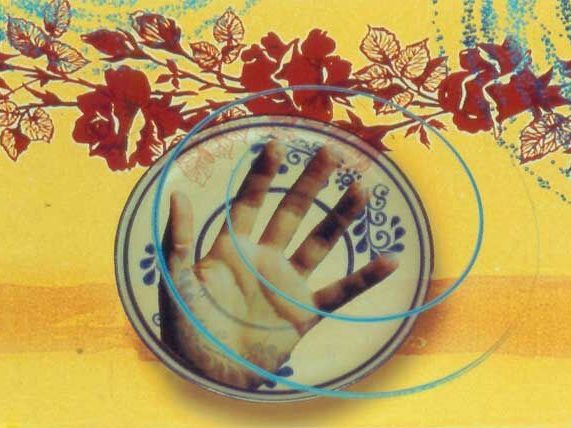Archive
Rolando Briseño Tablescapes

Although Rolando Briseño has used more traditional artistic mediums for almost two decades, he has recently explored an artistic mode of expression that may very well become a staple for the new millennium—the giclèe, a computer-conceived and computer-generated medium. Briseño accepts the inevitability of computer-generated facsimiles in artistic expression, but what he does not accept is its lack of human warmth historically generated by the touch of craftsmanship. “Technology often strives to control or to define or to predict, all in search of instant access and uniform replication,”he says. “With my giclèes, I attempt to reconcile the genuineness of nature with the predictability of modern techno-culture. Fundamentally, nature is life, and we are part of that rhythm of life, including its unexplainable spirit that art can only re-present.”
Briseño’s series of giclèes takes on the task of reconciling the essence of life both large and small, a perspective that has also evolved due to technology. The artist often portrays these perceived extreme expanses of reality in grand mural-size giclèes. The root of this strategy is not determined by chance. Briseño explains, “There is a commonality among the universe, the microscopic, and a humanity that thrives both vigorously and precariously between them. By expressing all life on the same scale, a true significance of equality is dramatized.” His giclèe images of galaxies, solar systems, nebulae, and stars represent the infinite and ever-expanding touchstones of reality.Protons, quarks, viruses, cells, DNA, and chromosomes represent the seemingly invisible, yet are far from benign. In “Testosterone Table,” the deer locked in combat symbolize the earth’s air-breathing creatures’ everyday struggle for reproduction and life. A hand superimposed on a Mexican china platter connotes a Nerudian parallel between the simple interaction of hand and plate, as well as an elusive planetary sphere that is celestially out of reach. Briseño’s work has come full circle, evolving with modern tools of expression, yet he asks the same questions humanity has asked in the past, the present, and, most assuredly, in the future.
Briseño’s images, both past and present, reside within the framework of “tablescapes,” embodying a meeting place that ritualizes the heart and stomach. He uses the table as a setting to manipulate images that project a microcosm of humanity. The table, like an artist’s canvas, is probably one of the purest forms of human expression. It is honest, utilitarian, durable, and above all, it is unhindered by the defining qualities of language and science. It is where we communicate and discover. We join at tables. We dine—formally and informally. We celebrate, and we pray. The wealthy, the poor, the illiterate, the educated—we all sit at the table. What we bring to the table reflects who we are, yet what we leave with is unpredictable. The universe is set at every table, so we sit and partake.